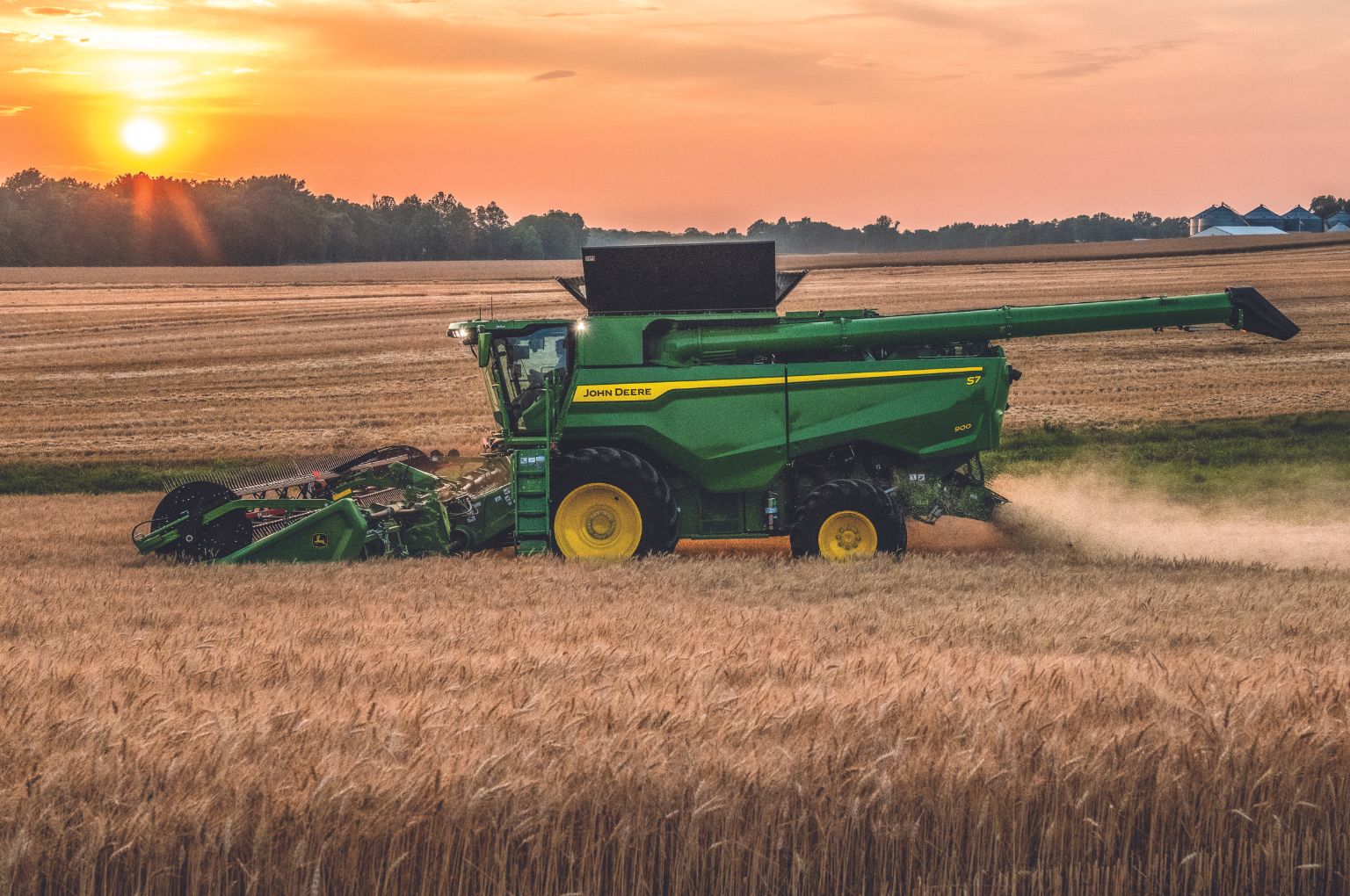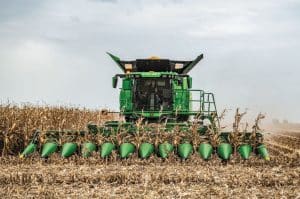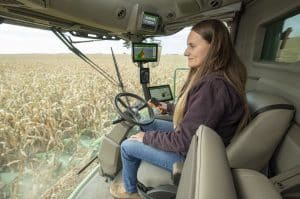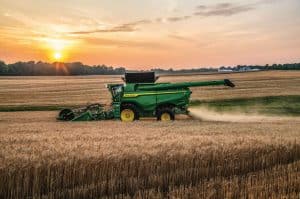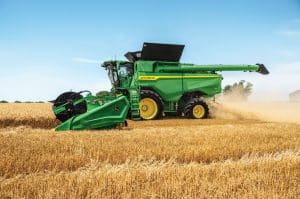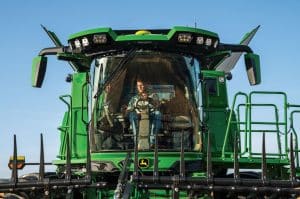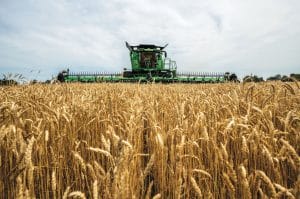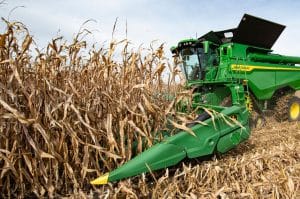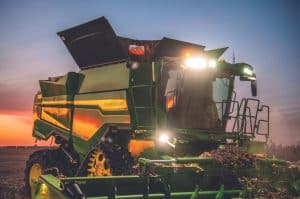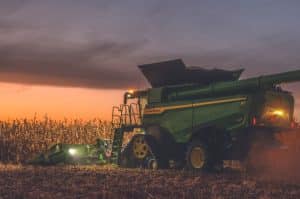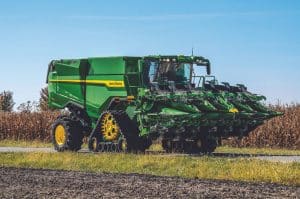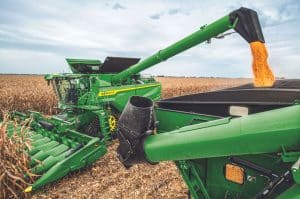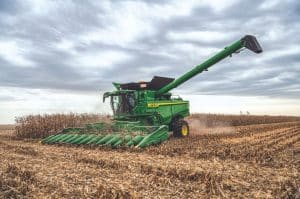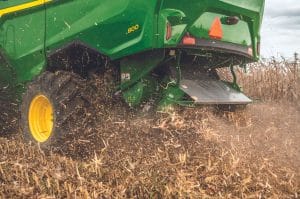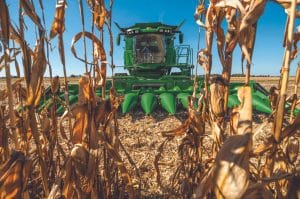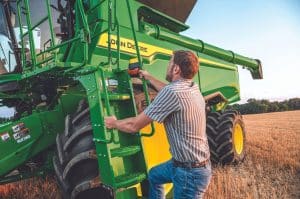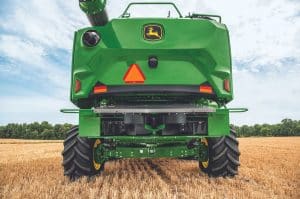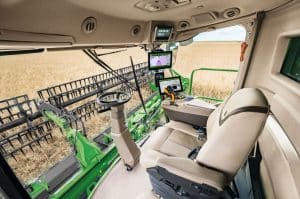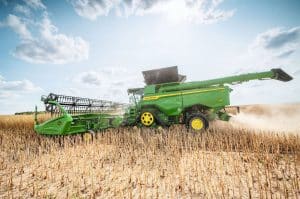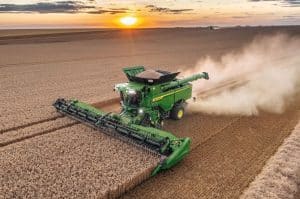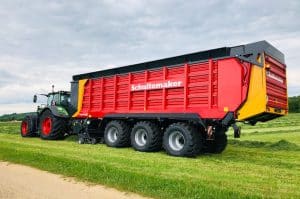John Deere introduces the all-new S7 Series of combine harvesters, designed for efficiency, harvest quality and operator friendliness. Harvest time is no time to let up in the chase for efficiency. Main features of the S7 Series are new engines, grain handling and residue management.
“While we’ve made visible updates to the cab and exterior styling, the real performance, efficiency and harvest-quality improvements come from the new engines, updated residue-handling, grain-handling and loss-sensing systems, new automation options and more,” said Bergen Nelson, John Deere go-to-market manager for harvesters. “Productivity gains of up to 20%, with 10% less fuel used can be expected.”
The new S7 Series combine family includes four models:
- S7 600: 333hp/249kw rated power; 367hp/274kw max power
- S7 700: 402hp/300kw rated power; 460hp/343kw max power
- S7 800: 473hp/353kw rated power; 540hp/402kw max power
- S7 900: 543hp/405kw rated power; 617hp/460kw max power
S7 Series combines are equipped with either the JD14 13.6L engine, or the JD9 9L engine, both in Final Tier 4 configuration, from John Deere Power Systems. Designed to produce higher power at lower RPM’s, these offer improved all-conditions performance and advanced diagnostics capabilities.
“The improvements we’ve made to these engines, from the new sensor design to the improved fuel dosing and EGR systems, will help bring emissions down to Final Tier 4 standards and reduce fuel consumption, all while helping increase uptime during critical harvest windows.”
The S7 Series combines also offer a new high-efficiency residue management system. Featuring straight knives, a mechanical tailboard drive, and the available Premium PowerCast tailboard, the S7 Series combines can more consistently size and spread fine- or extra-fine cut residue up to 45 feet, while drawing up to 15 fewer hp for residue management functions.
“Spring tillage begins with fall harvest,” Nelson said. “It’s critical for residue to be sized and spread properly to promote fast breakdown. The residue management system on the S7 Series combine can be configured with a range of tailboards and knives, so farmers can get the chop they need, regardless of crop.”
After the grain tank is emptied through the new adjustable unloading spout, the cross-auger shutoff feature completely empties the unloading system, reducing weight in the unloading auger and reducing wear on the associated belts.
The S7 Series combines also feature an improved grain loss monitoring system in base equipment.
“The new loss-sensing system detects grain loss at the rear of the cleaning shoes and the separator and is up to three times more accurate than the previous system,” Nelson said. “The loss rate is shown clearly on the in-cab display, so operators can quickly make any adjustments necessary.”
Corner-office comfort
The new operator’s station offers more storage space, more cupholders, more heat for the feet, a more comfortable seat and more glass for better visibility.
Also the cab ladder has been redesigned. The increased angle makes entry and exit easier and more comfortable, while also keeping the combine within transport width limits.”
Along with the operator comfort upgrades, John Deere will equip base S7 Series combines with the G5PLUS CommandCenter, an Integrated StarFire 7500 receiver, a JDLink modem, and a new corner post display.
“The new cab features and updates serve two purposes,” Nelson said. “The technology solutions pave the way for the new automation features and functionality, and the comfort and convenience updates help reduce distractions that can take the operator’s attention away from the task at hand. This is a win for farmers, custom harvesters, and their operators.”
The Model-Year 2025 S7 Series and X9 Series combines are available with three technology packages operators can choose from – select, premium and ultimate. Available options in the ultimate package include:
- Ground Speed Automation, a dynamic ground speed control feature that helps maintain a consistent feed rate by automatically adjusting the combine’s ground speed based on operator inputs and operator-defined limits on variables such as grain loss, engine power and rotor pressure.
- Harvest Settings Automation helps operators get into the field faster by automatically setting concave clearance, fan speed, rotor speed, sieve clearance and chaffer clearance, all based on the combine model, crop type and geolocation. After the operator selects limits for grain loss, foreign material and broken grain, the system automatically adjusts the five initial settings to stay within the selected limits.
- Predictive Ground Speed Automation controls the combine’s ground speed based on crop height and biomass measurements taken pre-harvest from satellite scans and from on-the-go measurements made by cab-mounted cameras.

![RightSpot Ad Template Digital-1400×190-px[76] Ag Leader RightSpot](https://world-agritech.com/wp-content/uploads/elementor/thumbs/RightSpot-Ad-Template-Digital-1400x190-px76-r316mmc0hgoob9qxmklllnnbxta1nlj7t2vjkoyeek.png)

